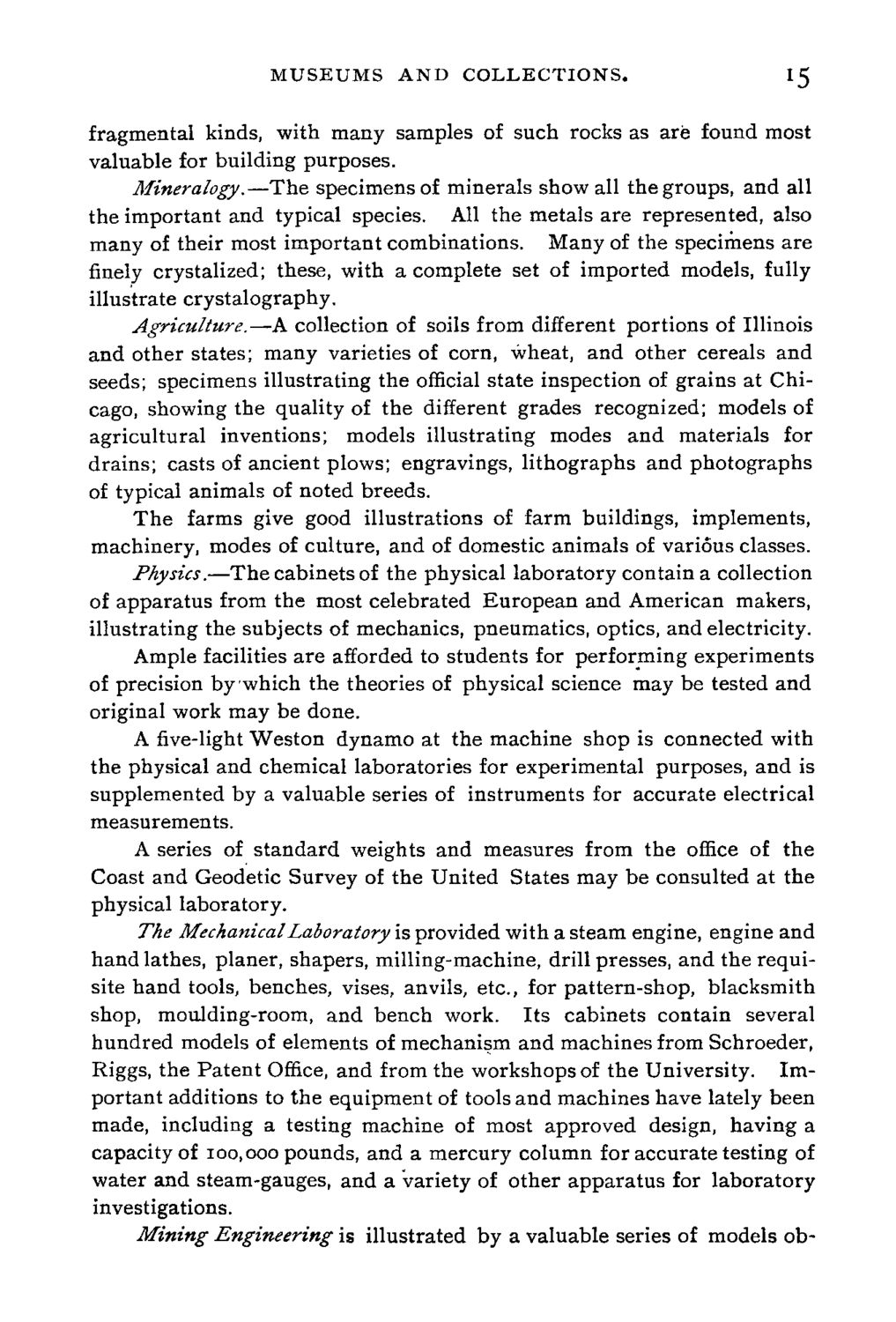| |
| |
Caption: Course Catalog - 1890-1891
This is a reduced-resolution page image for fast online browsing.

EXTRACTED TEXT FROM PAGE:
MUSEUMS AND COLLECTIONS. 15 fragmental kinds, with many samples of such rocks as are found most valuable for building purposes. Mineralogy.—The specimens of minerals show all the groups, and all the important and typical species. All the metals are represented, also many of their most important combinations. Many of the specimens are finely crystalized; these, with a complete set of imported models, fully illustrate crystalography. Agriculture.—A collection of soils from different portions of Illinois and other states; many varieties of corn, wheat, and other cereals and seeds; specimens illustrating the official state inspection of grains at Chicago, showing the quality of the different grades recognized; models of agricultural inventions; models illustrating modes and materials for drains; casts of ancient plows; engravings, lithographs and photographs of typical animals of noted breeds. The farms give good illustrations of farm buildings, implements, machinery, modes of culture, and of domestic animals of various classes. Physics.—The cabinets of the physical laboratory contain a collection of apparatus from the most celebrated European and American makers, illustrating the subjects of mechanics, pneumatics, optics, and electricity. Ample facilities are afforded to students for performing experiments of precision by which the theories of physical science may be tested and original work may be done. Afive-lightWeston dynamo at the machine shop is connected with the physical and chemical laboratories for experimental purposes, and is supplemented by a valuable series of instruments for accurate electrical measurements. A series of standard weights and measures from the office of the Coast and Geodetic Survey of the United States may be consulted at the physical laboratory. The Mechanical Laboratory is provided with a steam engine, engine and hand lathes, planer, shapers, milling-machine, drill presses, and the requisite hand tools, benches, vises, anvils, etc., for pattern-shop, blacksmith shop, moulding-room, and bench work. Its cabinets contain several hundred models of elements of mechanism and machines from Schroeder, Riggs, the Patent Office, and from the workshops of the University. Important additions to the equipment of tools and machines have lately been made, including a testing machine of most approved design, having a capacity of 100,000 pounds, and a mercury column for accurate testing of water and steam-gauges, and a variety of other apparatus for laboratory investigations. Mining Engineering is illustrated by a valuable series of models ob-
| |